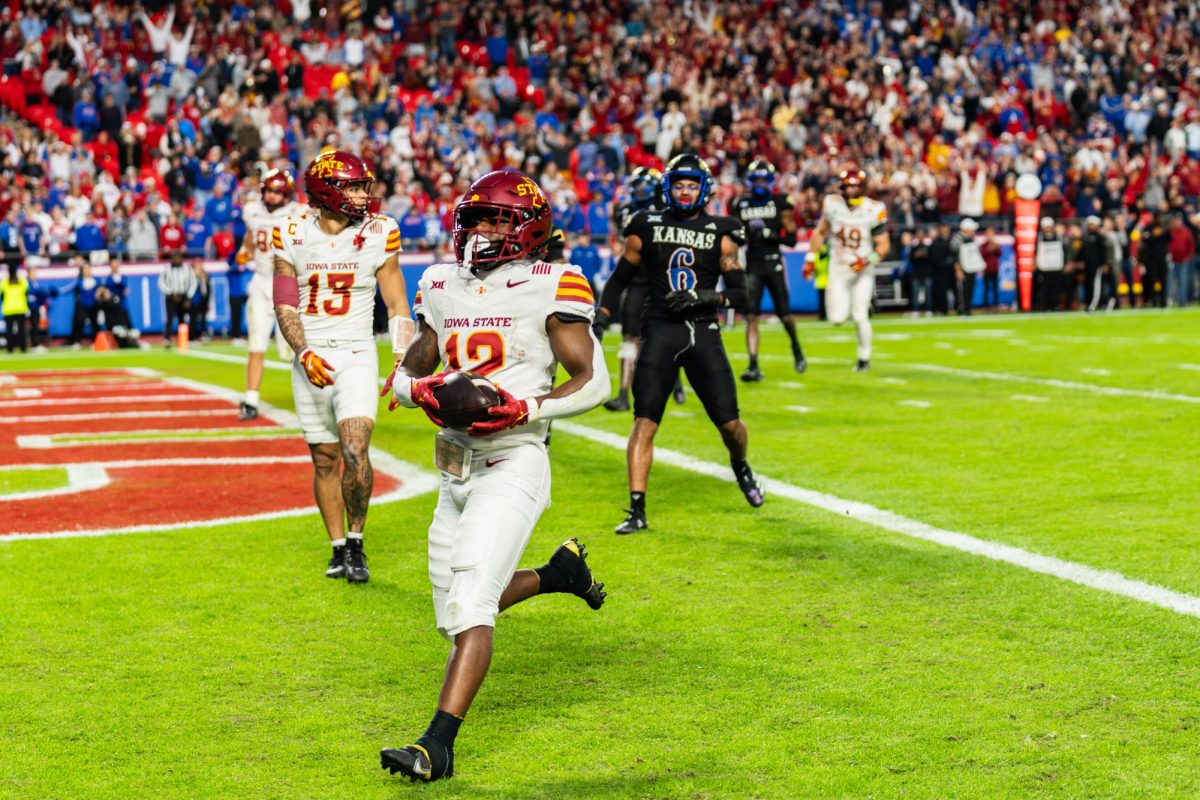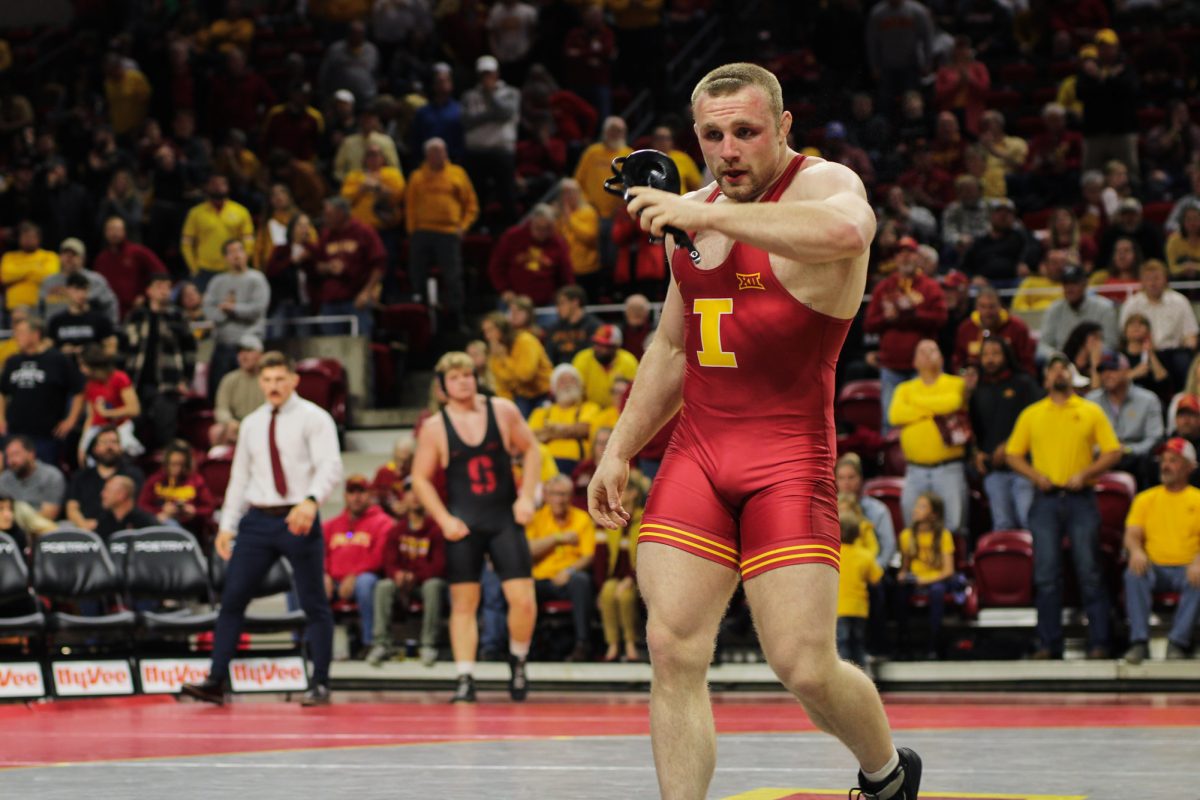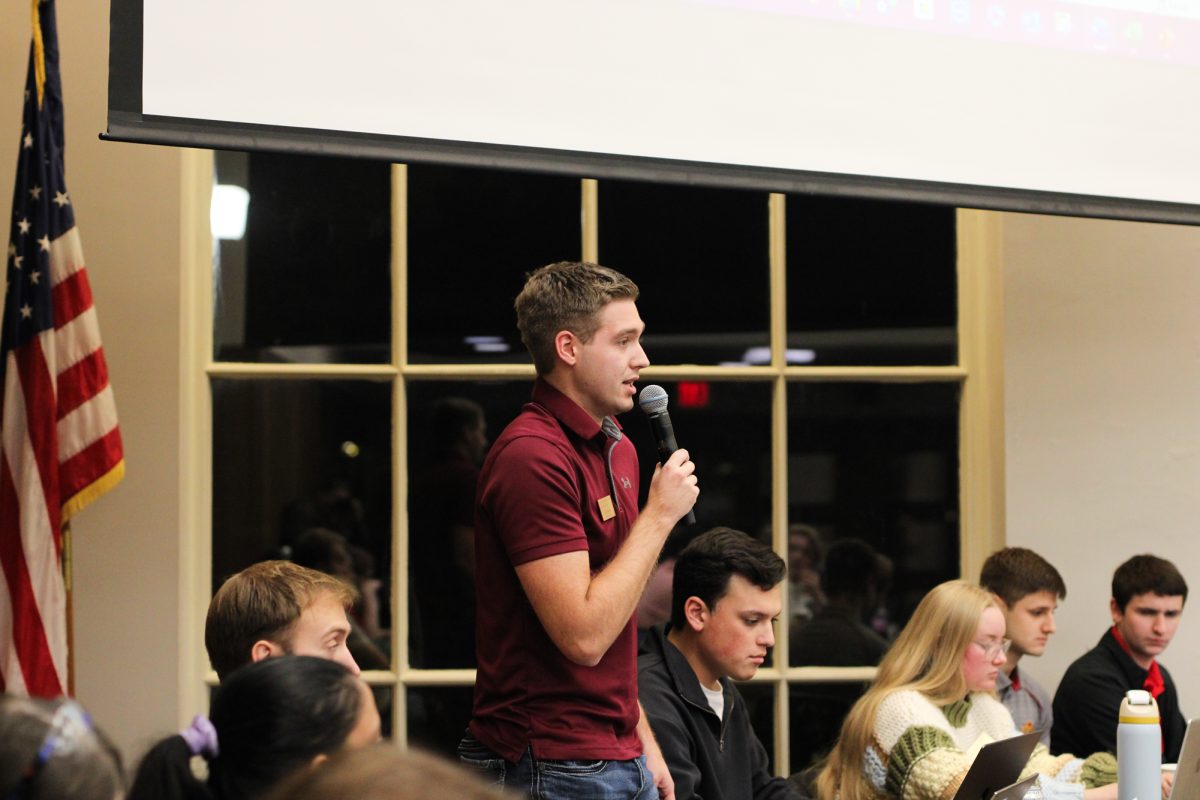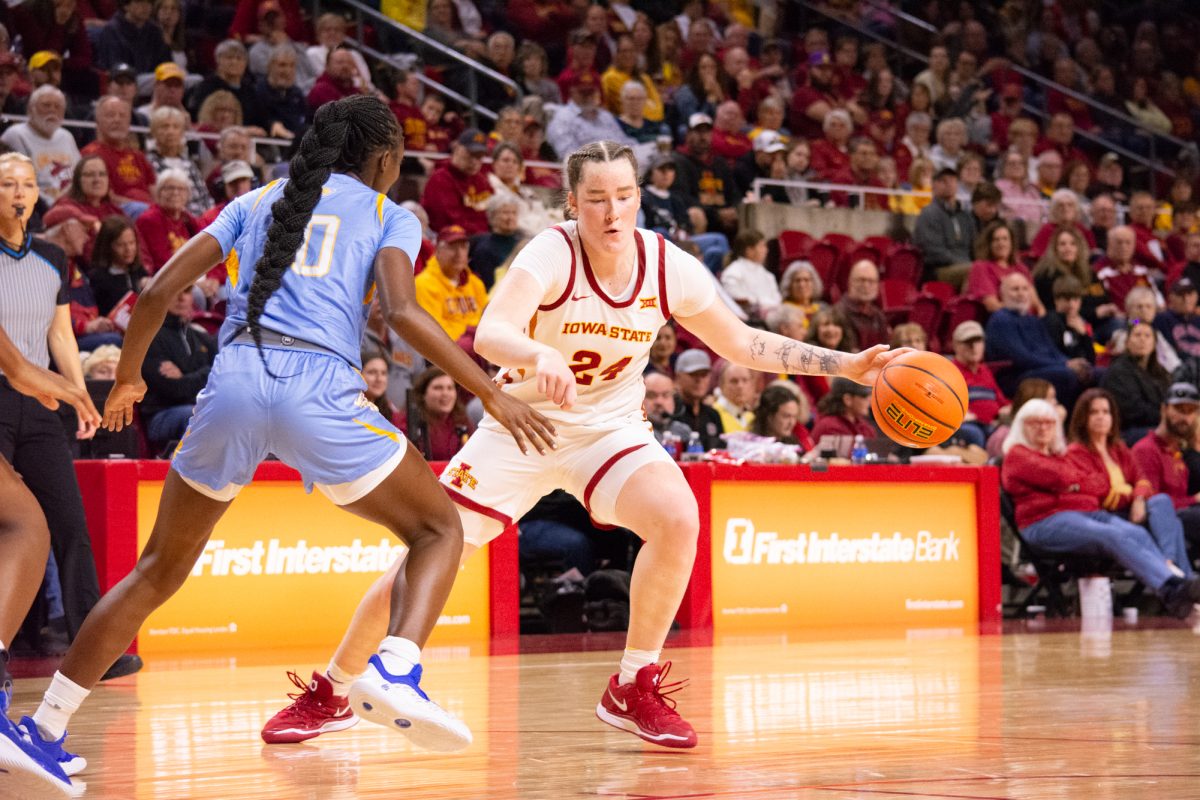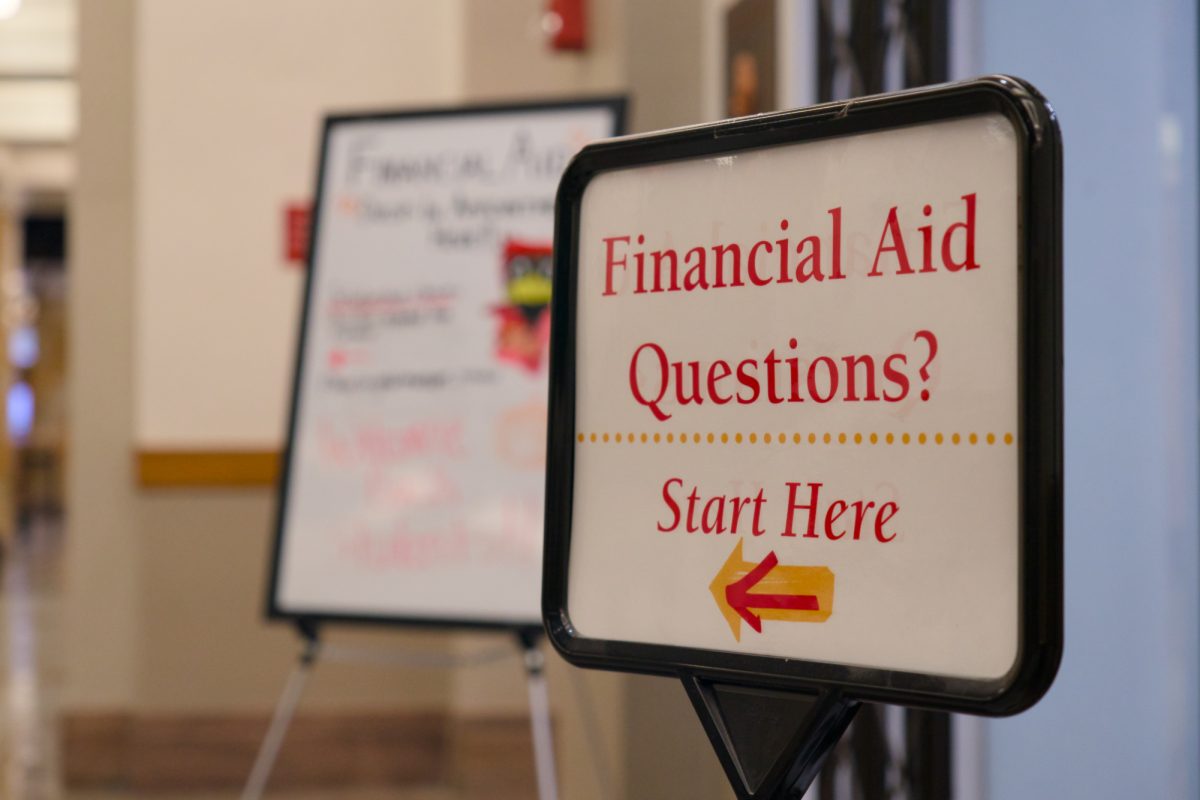Troy Davis: Balancing school and Heisman hype
October 26, 1995
Iowa State running back Troy Davis may have 1,324 yards on the football field, but he covers much more ground everyday off the field.
The sophomore tailback from Miami leads the nation in rushing and is considered a Heisman Trophy candidate.
His name has been plastered in newspapers, magazines and sports television possibly more than any other football player in Cyclone history, but he is still just a 20-year-old ISU student.
Davis was set to leave ISU after last season. He didn’t like the triple-option offense under Jim Walden and he felt his ability could be better used elsewhere. He had carried the ball a total of 35 times for only 187 yards. But new coach Dan McCarney convinced Davis to stay.
From there it has been one broken record after another.
He leads the nation in rushing and all-purpose yards. He is the first sophomore ever in Division I football history to gain 1,000 yards in five games. He is third in the nation in scoring. He holds the two highest rushing totals in a game for ISU — 291 yards against Ohio University in the first game of the season and a 302-yard performance against UNLV. He needs only 193 yards to pass Blaise Bryant as ISU’s all-time leading single-season rusher.
The list goes on and four games still remain.
Davis, however, doesn’t talk Heisman; he talks team.
Balancing the spotlight of the media, fans, alumni and football fanatics everywhere is a difficult chore for even the most seasoned veterans. The eyes of everyone are on Davis, a 5-feet, 8-inch college student.
But Davis gave the impression Tuesday that he’s just another ISU student enrolled in 13 credits — who happens to be the university’s most celebrated football player.
*ÿ*ÿ*
7:55 a.m.
Davis arrives at the steps of Curtiss Hall for his History 201 class. He’s been up since seven this morning and has already eaten breakfast. Normally on Mondays and Wednesdays he’s up even earlier for weight training, so today is his morning to sleep in.
The sleep not quite wiped from his eyes yet, he wears a black leather coat with black gloves and hauls his textbooks and notepads in a black Dallas Cowboys bookbag.
“Emmitt Smith is my role model. I like his style of running. We’re real similar because we’ve got average speed and we can make things happen,” Davis says.
At the door of the classroom he crosses the path of ISU football graduate assistant Jody Sears, who is sitting on a bench just in front of the doors.
“How’s it going Troy?” Sears asks with an energetic smile.
“Pretty good,” Davis says, “I made it.”
It isn’t unusual for a coach to show up before a class starts, Davis explains. McCarney stresses academics and wants to make sure the players make it to their classes.
“Yeah, it’s tough sometimes because you work hard in practice and then you’ve got to get up early for classes. Coach McCarney stresses going to classes everyday. You’ve got to run if you don’t go,” Davis says.
Under Walden, that type of watchdog enforcement wasn’t there. But with the new threat of possible laps, Davis says he hasn’t missed a class yet this semester.
Davis enters the lecture hall full of yawning ISU students, scans the seats and finds who he is looking for. He trods to the back aisle of the lower level of the hall and purposely brushes one of his gloves on the neck of a student sitting in the back row.
The unsuspecting student is Ed Williams, a sophomore wide receiver on the team, who is in gray sweats and is reading an issue of Sports Illustrated.
Davis snags a place to sit two seats from the right of Williams and takes out his books as the room begins to fill with students.
Williams, who is also from Florida, motions to Davis, asking who the person sitting next to him is.
“The Daily … Coach McCarney’s doing something about me,” Davis mumbles.
“They gonna have it inside with pictures?” Williams whispers back.
Troy nods and turns his attention to the reporter next to him.
“You know who everybody is here?” he asks.
On Williams’ left sits Davis’ roommate Kevin Hudson, a sophomore free safety from Miami, and to the right of Davis is Damian Gibson, a freshman tight end, who is also from Florida.
The Floridians are a tight group, practically inseparable.
“We’re always staying together, like a package,” Davis says.
Hudson and Davis were friends in high school, even though Davis went to Southridge and Hudson attended South Dade in Miami.
The professor begins to discuss score results from a test taken the week before, but it is difficult to hear him because the microphone he wears on his checkered blazer isn’t close enough to his mouth.
“Hard to hear him,” Davis grins.
The professor begins to lecture on the spread of Islam throughout the world and Davis is leaning forward straining to hear with a pencil in right hand and his head propped on an arm scarred with turf burns.
As the class continues, he jots down a line or two every few minutes as some of his classmates sleep.
8:45 a.m.
The class ends and Davis joins many of the students at the front of the room to find his grade on the exam. The test consisted of 50 questions and the professor announces the best score was a 41.
“I did pretty good, a 35,” Davis smiles.
Williams did well on the exam, too. He receives a 38. Hudson doesn’t fare as well as his roommate.
“Kevin better start studying with us,” Williams jokes.
9 a.m.
Hudson, Williams, Gibson and Davis leave Curtiss and walk across the campus to their next class, Political Science 215. Davis looks as if he is at home with his friends. The four men are all laughs and almost everything said is something funny to them.
“I’ve got an interview today at 11:30,” Davis says during one of the few nonjoking lapses.
“ESPN?” Williams asks.
“No, Channel 8 I think,” Davis responds.
Davis says people come up to him on campus quite often and congratulate him on his game performance.
“A lot of people come up to me and say you had a good game. It makes me feel good,” he says.
9:15 a.m.
They arrive in the classroom in MacKay Hall early for class as many other students filter in. The players walk to the far end of the room and find enough chairs to sit together as Williams gets out a plane ticket for his trip home for Thanksgiving break.
Davis is pleased when he realizes he will be flying on the same plane as Williams for the trip home from Des Moines to Kansas City and then to Miami.
“I tell you, dog, we’re always together somehow,” Williams says.
Davis hasn’t seen his family since last spring semester was over. He says it is difficult for him because they are so far away. His brother Darren, a running back sensation at Southridge, broke his leg earlier this season during a football game.
“I call home mostly everyday,” Davis says. “I’m real close to my family.”
9:30 a.m.
“We’ve got a quiz today,” Davis says.
He gets up and walks across the room to the pencil sharpener in front of all the desks, but no one seems to notice him.
“Here you go Troy,” the teacher’s assistant says as he hands Davis the short quiz on Congress and mass media.
Davis flies through the first few questions and then hesitates with the next few, going back to a couple, erasing them and changing the answers. He is done with the quiz several minutes before they are handed back.
“I think I did alright,” he says.
The professor then goes through the correct answers and Davis figures he missed three questions.
10:45 a.m.
The players leave MacKay Hall and walk across the street to a Cy-Ride bus stop. The orange route arrives after a few minutes and Davis, Williams, Gibson and Hudson attempt to squeeze their way through the sardine-packed bus to the back, where a couple of empty seats await them.
Today’s classes are finished for Davis and now he starts thinking about football — and his stomach.
11 a.m.
Davis is the first off the bus as it stops in front of Linden Hall. The players enter the doors of the residence hall and check their identification numbers in the food service computer.
On the desk are several pieces of paper and a small toy football meant for autographs. The papers are from Ames Elementary School children, who want John Hancocks and the football is for a nephew of one of the food service workers.
All of the players stop to take time to sign all of them, including Davis.
“It shows people care about us,” Davis says.
Davis slaps a pile of chicken and noodle casserole on his plate along with several potato wedges and sits down with the Floridians. Some ISU volleyball players are at another table and at the other end of Davis’ table sits a few other football players.
While he eats, a food service worker pulls Davis aside and asks him to sign a couple of papers he missed by mistake, which he politely obliges.
As they leave the lunchroom, Davis and Williams grab a couple of large, bright red strawberries for the road.
11:20 a.m.
As they wait for the bus outside of Linden, Davis begins to think about the news conference he has in a short while. Todd Bandhauer, a freshman quarterback also from Florida, is waiting for the bus as well. Bandhauer is scheduled to be interviewed, too.
“You know practice is gonna be cold,” Bandhauer says as he leans forward with his hands in his sweatshirt pockets.
“I always get nervous. You never get used to it,” Davis says as he imagines the upcoming media frenzy. “I just try to stay calm. I just think about what they ask me and how I’m going to say it back to them.”
11:30 a.m.
Davis arrives at the Olsen Building and prepares himself for the press.
“I feel more relaxed at practice because I have my friends around,” Davis says. “At press conferences you don’t know who’s gonna be there.”
McCarney comes around the corner of the hallway and smiles when he sees Davis. McCarney has just finished his news conference.
“Hey T.D., how’s it going?” McCarney says. “I need to talk to you for a minute.”
He takes Davis into his office and closes the door.
“He just wanted to see how I’m doing. He asks me that everyday,” Davis explains as he walks to the news conference room.
Bandhauer is answering reporters’ questions and television cameras line the back of the room. Most seats in front are full of newspaper and radio reporters. Davis stands inside a doorway to the back of the room and watches Bandhauer talk about starting this Saturday against Oklahoma State.
Senior safety Matt Straight is next and Davis sits in the back of the room focusing on the reporters and what they might ask him.
“Here’s Troy Davis,” says Tom Kroeschell, director of athletic media relations, as he points Davis to the front of the room.
The podium Davis stands at is layered with microphones and tape recorders ready to catch every sound that comes from the nation’s leading rusher. Bright television lights shine directly on him and he squints slightly when answering the first question.
“So Troy, how are you feeling? Are you sore at all?” a reporter asks.
He tells them he is feeling good and proceeds to answer about 15 questions concerning the Heisman hype, his brother, wrestling in high school and the Cyclones’ upcoming foe, Oklahoma State.
“It went alright,” Davis says with a smile as he leaves the room.
1:15 p.m.
Davis, dressed now in a gray “Iowa State Football” T-shirt and football pants, meets graduate assistant Jody Sears’ mother and Sears’ 6-year-old son, Weston, outside the Cyclone locker room. Weston has a small Cyclone football he wants Davis to sign.
“I don’t get tired of it,” Davis says. “That’s what a good player does.”
The boy gives a shy “Thank you” and then smiles and shows his dad his new treasure, signed by the Cyclone football star.
“I consider myself a role model. Kids look up to me. They write to me from California, Florida and all over and say ‘I want to look up to you and I want to run like you.'”
2 p.m.
In the Cyclone locker room, Davis gets his equipment ready for today’s practice, checking everything to make sure it’s there and ready to go. His helmet shows the scars of his previous rushing battles.
He sits in front of locker “#28 – Davis” as some players on padded benches watch “MTV’s The Grind” on a television bolted to the front wall.
“It’s pretty loose right now,” Davis says.
But it’s all business, he explains, when they get to the practice field.
Kemp Knighten, a sophomore defensive back, is putting on his practice shirt. The word on Troy’s history grade must have gotten out.
“You see your grade yet?” he asks Davis.
“I got a 35,” Davis says.
“That’s a B,” Knighten smiles.
“No man, that’s an A,” Davis grins with pride.
Todd Doxzon, ISU’s starting junior quarterback, is across the room listening to headphones. Davis likes to listen to rap DJ “Uncle Al” before every game to get psyched up.
“I listen to it before the game and on the bus on the way to away games,” he says.
Davis can’t wait to get out on the practice field, but first he has a team meeting to attend.
“I look forward to practice because I want to know the game plan we’re going to have against the team we play,” he says.
2:30 p.m.
Davis grabs an apple as he heads down the hall to a small room with a wide table, several chairs and a videotape projector with a large screen on the wall.
He is the first one in the room and takes a juicy bite from the apple and waits for the other running backs to enter.
Starting fullback Rodney Guggenheim is the first to show. He sits next to Davis and watches tape of a previous Oklahoma State game.
“Look at that linebacker. He ain’t even trying to tackle,” Guggenheim says to Davis.
Fellow Cyclone running backs file in one by one, followed by ISU running back coach Kirby Wilson, who gave a halftime speech to Davis during the Colorado game calling him “a warrior.” Davis went on to rush for 203 yards on 33 carries for his best performance against a Big Eight team.
Wilson closes the team meeting door to everyone that is not in his running back family.
3 p.m.
Davis sits in front of his locker putting on his white football spikes and shoulder pads. He grabs his gloves and scarred helmet and walks down a corridor adorned with signs written before last week’s game with Colorado from Webster City second graders that say, “Good Luck; Go ISU; Cyclones; Beat the Buffaloes.”
Around the corner he meets Tim Kohn, a junior offensive tackle, who is having trouble pulling his practice jersey over his shoulder pads. Davis stretches to reach the shoulders of his 6-feet 5-inch 294-pound protector.
“How’s your brother doing, man; the cast off yet?” Kohn asks Davis as they walk out of the Olsen Building toward the practice field on the east end of Cyclone Stadium.
“Nope, he’s still got it on, but he’s doing good,” Davis replies.
3:20 p.m.
Practice begins with fundamental drills. Davis and return specialist Jahi Arnold take turns catching kickoffs as Coach Wilson gives words of wisdom.
“Transfer the weight, bend your knees. Let’s go T.D.,” he says.
As the coaches turn to running the offense during practice, Davis stands in anticipation on the sidelines, waiting to be put in.
“Play to win; no excuses. That’s all we’re preparing for this weekend,” McCarney shouts at the team as they continue drills. “Let’s go boys. It’s time to get a win.”
Davis goes in with the first team and catches a short pass on the first play.
“Good catch T.D. That’s the way to catch the ball,” McCarney hollers from across midfield.
7:30 p.m.
After practice it’s back to the books for Davis. Tonight he and Williams have critique papers to write for English 105. Joanna Schroeder, a graduate assistant for the ISU Athletic Learning Center, helps Davis look at advertisements, judging them for their effectiveness in displaying their products.
Oddly, the magazine Troy chooses to pick from is Sports Illustrated.
Schroeder says it is common for players to be enrolled in the same classes because their schedules are very similar. They must all be done with classes by 1 p.m. to be able to get to practice.
“That’s common for athletes to be in the same class because of time restraints,” Schroeder says.
Davis then finishes out his required two hours of study table with geology homework.
*ÿ*ÿ*
Davis is a prime example of a college athlete with an organized schedule, comprised of football and academics, McCarney said over the phone on Thursday.
The coach pointed out that the NCAA allots only 20 hours a week that coaches can have with their players on the practice field.
“[Davis] has done a fabulous job following our routine that we have organized for the players,” McCarney said. “We try to account for every minute we have with them, but they’re here to get their degrees.”


